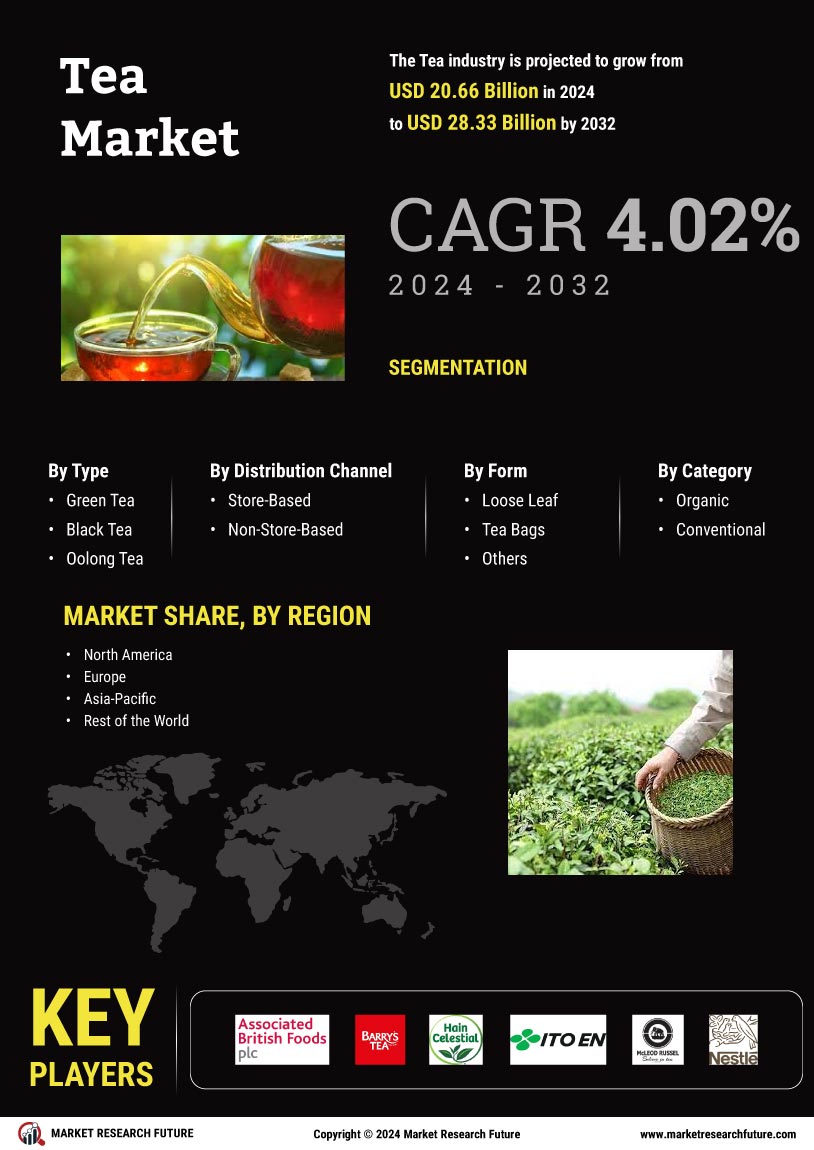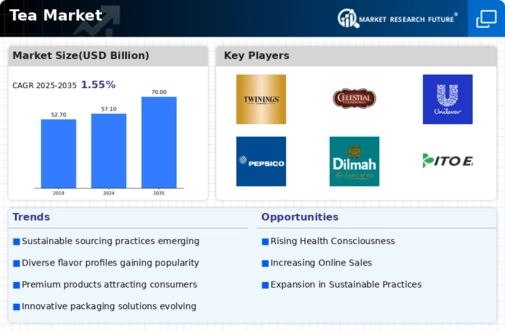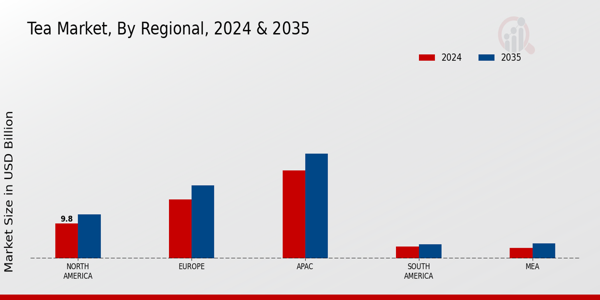Tea Market Summary
As per Market Research Future Analysis, the Global Tea Market was valued at 20.67 USD Billion in 2024 and is projected to grow to 31.89 USD Billion by 2035, with a CAGR of 4.02% from 2025 to 2035. The market is driven by increasing health consciousness, the rise of specialty teas, and the expansion of online retail channels. Consumers are shifting towards premium, organic varieties and unique blends, reflecting a growing preference for health-oriented products. The Asia-Pacific region dominates the market, accounting for 20.67 USD Billion in 2024, followed by Europe at 16.5 USD Billion.
Key Market Trends & Highlights
The Global Tea Market is evolving with significant trends driven by consumer preferences and health awareness.
- Market Size in 2024: USD 20.67 Billion
- Growth in Online Sales: Over 25% increase in tea sales globally over the past three years
- Rising Demand for Specialty Teas: 20% growth in premium and unique tea blends in the last five years
- Health-Conscious Consumers: 15% increase in adults adopting healthier lifestyles over the last five years
Market Size & Forecast
| 2024 Market Size | USD 20.67 Billion |
| 2035 Market Size | USD 31.89 Billion |
Major Players
Tata Tea, Ahmed Tea, Numi Organic Tea, Unilever, Dilmah, FrieslandCampina, Nestle, PepsiCo, Yogi Tea, The Coca-Cola Company, Taiwan Tea Corporation, Celestial Seasonings, Kusmi Tea, Tea Group, Tetley























Leave a Comment